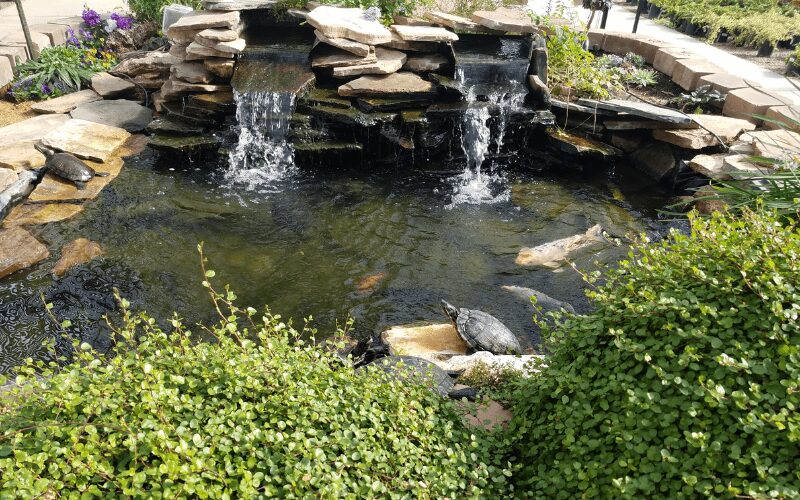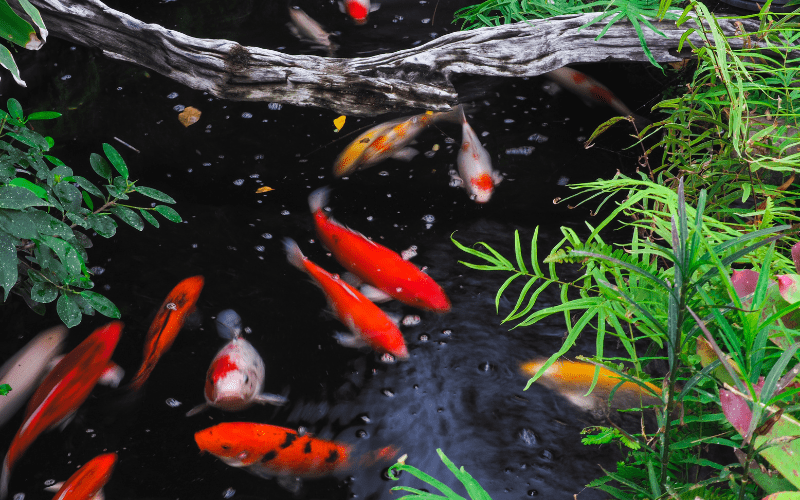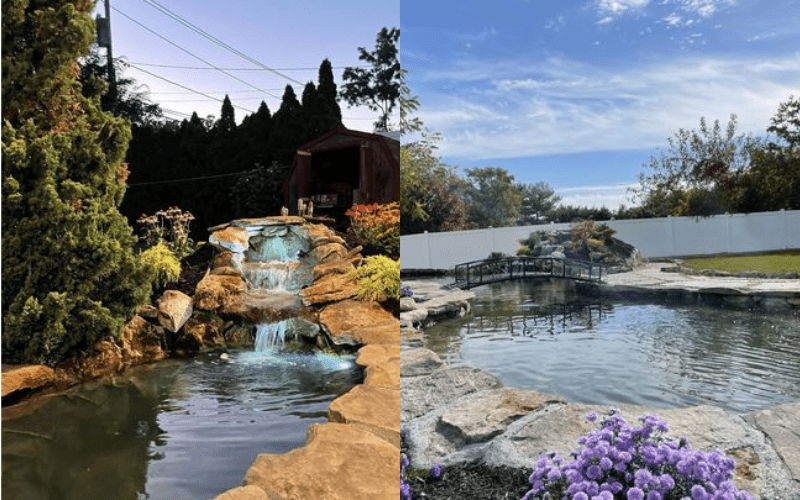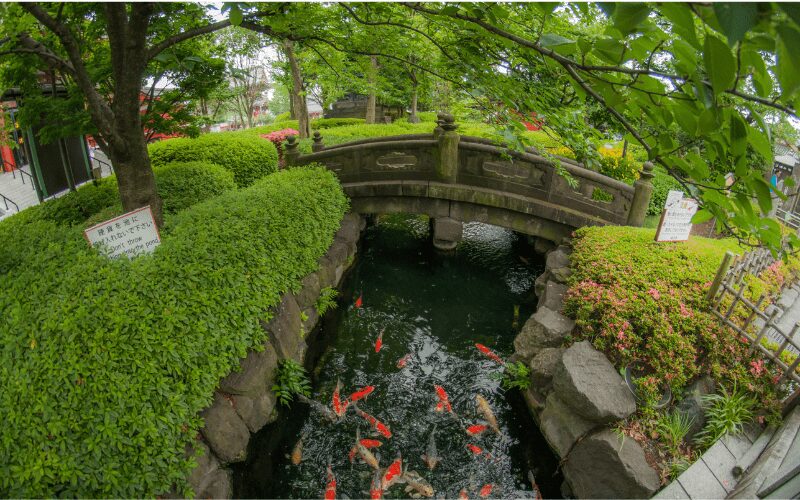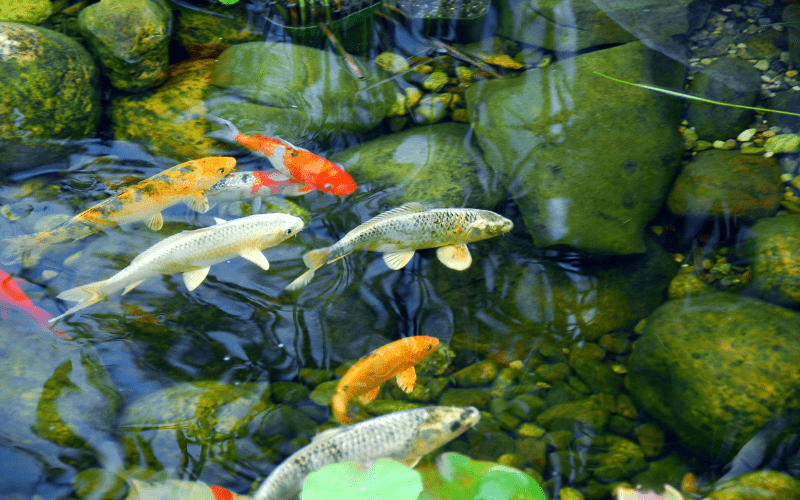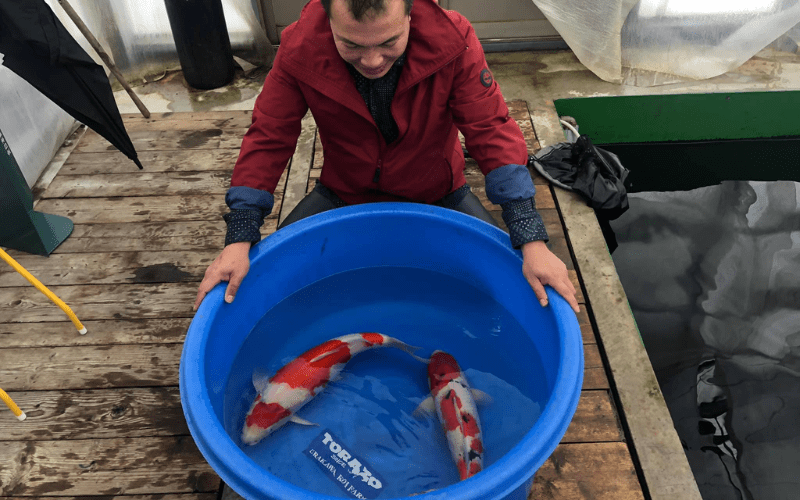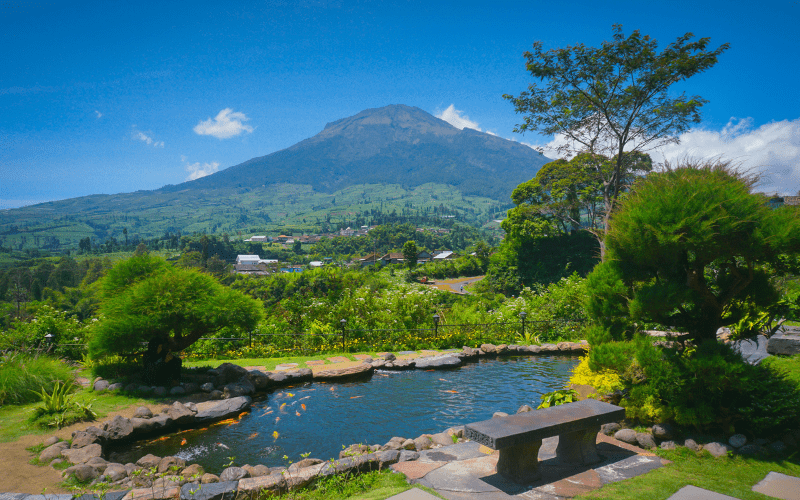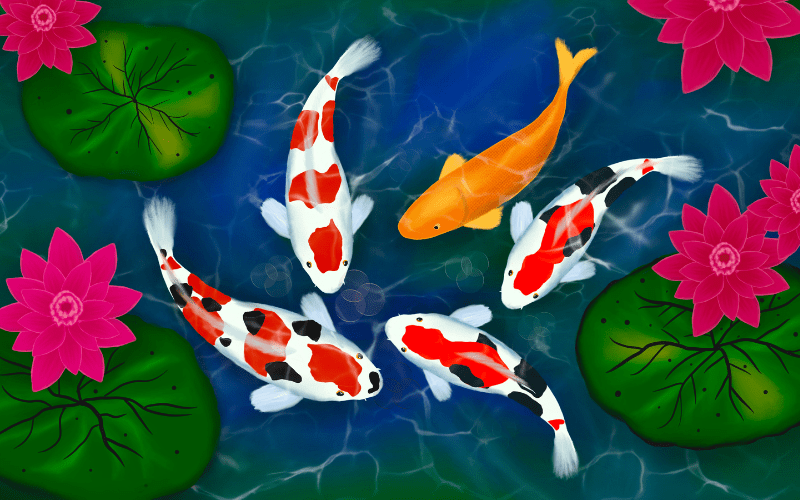Maintaining a koi pond requires more than just admiration for the beautiful fish swimming inside it. A clean and well-maintained pond is crucial for the health of your koi and the overall aesthetic appeal of your garden or outdoor space. Regular cleaning ensures that your pond remains a healthy environment, preventing harmful algae blooms, keeping water clear, and allowing your koi to thrive. This blog post will provide you with the best tips for cleaning your koi pond, using a comprehensive approach that covers everything from daily maintenance to deep cleaning techniques.
The Importance of Cleaning and Maintenance of a Koi Pond
A koi pond is a living ecosystem, and like any ecosystem, it needs balance to remain healthy. Regular cleaning and maintenance are essential to prevent the buildup of waste, debris, and harmful bacteria that can negatively affect water quality. Poor water quality can lead to stress and disease in koi, reducing their lifespan and diminishing their vibrant colors. By investing time in cleaning your pond, you are not only preserving the beauty of your outdoor space but also ensuring that your koi live in a safe and nurturing environment.
At Torii Koi And Pond, we understand the value of a well-maintained pond and offer expert advice and high-quality products to help you achieve the best results.
Essential Cleaning Equipment
Must-Have Tools for Pond Maintenance
To maintain a clean and healthy koi pond, having the right equipment is essential. Here are some of the must-have tools that will make pond cleaning easier and more effective:
- Pond Skimmer: A pond skimmer is a vital tool for removing floating debris, such as leaves and twigs, from the water’s surface. Regular use of a skimmer can prevent debris from sinking to the bottom, where it can decompose and negatively impact water quality.
- Pond Vacuum: A pond vacuum helps remove sludge, algae, and other debris from the pond floor. This tool is especially useful during deep cleaning sessions when you need to get rid of accumulated waste without disturbing the pond’s ecosystem too much.
- Algae Scrubber: Algae growth is a common issue in koi ponds. An algae scrubber helps keep algae under control, especially on pond walls and rocks, where it tends to grow.
- Net for Debris Removal: A simple but effective tool, a net allows you to manually remove larger debris from the pond, such as fallen branches or dead plants.
- Beneficial Bacteria Treatments: Adding beneficial bacteria to your pond can help break down organic waste and maintain water clarity. These bacteria are a natural way to keep your pond clean and balanced.
- UV Clarifier: A UV clarifier helps control algae by sterilizing the water, which kills free-floating algae cells. This tool is particularly useful if you struggle with green water or frequent algae blooms.
Key Points:
- Using the right tools makes pond cleaning more efficient and less labor-intensive.
- Regular maintenance with these tools prevents the buildup of harmful substances.
At Torii Koi And Pond, we offer a wide range of cleaning equipment designed to help you maintain a pristine pond environment. Our experts are always available to guide you in choosing the best tools for your specific needs.
Regular Maintenance Tips
Routine Cleaning to Prevent Buildup
Keeping up with regular maintenance is key to avoiding major cleaning overhauls. Here’s a breakdown of daily, weekly, and monthly tasks to keep your koi pond in top condition:
Daily Tasks:
- Remove Leaves and Debris: Skim the pond’s surface daily to remove any floating debris. This simple task prevents organic matter from sinking and decomposing at the bottom of the pond.
- Check for Algae Growth: Monitor algae growth daily. If you notice algae starting to take over, address it promptly with your algae scrubber or UV clarifier.
Weekly Tasks:
- Clean the Pond Filter: The pond filter is crucial for maintaining water quality. Cleaning it weekly ensures it functions effectively by removing debris and waste particles.
- Vacuum the Pond Bottom: Use a pond vacuum to clean the pond floor, removing sludge and other waste that has settled at the bottom.
- Test Water Quality: Regularly test the water for pH, ammonia, and nitrate levels. Keeping these levels in check is essential for the health of your koi.
Monthly Tasks:
- Perform Partial Water Changes: Changing about 10-15% of the water monthly helps dilute pollutants and refresh the pond environment.
- Trim and Maintain Aquatic Plants: Overgrown plants can hinder water flow and contribute to waste buildup. Trim them back to keep your pond looking tidy and ensure a balanced ecosystem.
Key Points:
- Consistent maintenance reduces the need for deep cleaning and keeps the pond environment healthy.
- Regular water quality testing helps prevent issues before they become serious.
Torii Koi And Pond emphasizes the importance of routine maintenance as a preventative measure. Our high-quality products, such as water testing kits and beneficial bacteria treatments, are designed to make regular maintenance tasks easier and more effective.
Deep Cleaning Techniques
Step-by-Step Guide for Deep Pond Cleaning
While regular maintenance is essential, deep cleaning should be performed periodically to remove accumulated waste and debris that regular cleaning might miss. Here’s a step-by-step guide for deep cleaning your koi pond:
Step 1: Temporarily Remove Koi to a Holding Tank Before starting the deep cleaning process, gently transfer your koi to a holding tank filled with pond water. Ensure the tank is adequately aerated and covered to prevent stress and escape.
Step 2: Drain the Pond Partially Drain the pond until the water level is low enough to expose the bottom. This makes it easier to clean the pond floor and walls thoroughly.
Step 3: Scrub and Clean Pond Walls and Floor Use an algae scrubber and pond vacuum to clean the pond walls and floor. Focus on removing algae, sludge, and other debris that may have accumulated over time.
Step 4: Clean or Replace the Pond Filter Media Take this opportunity to clean the filter media or replace it if necessary. A clean filter is essential for maintaining water quality.
Step 5: Refill the Pond and Acclimate Koi Back to the Water Once cleaning is complete, refill the pond with fresh water and use a water conditioner to remove chlorine and other harmful chemicals. Gradually acclimate your koi back into the pond by mixing pond water into their holding tank before releasing them.
Key Points:
- Deep cleaning should be done carefully to avoid stressing the koi.
- Proper handling and acclimation of koi are crucial during the cleaning process.
Torii Koi And Pond provides all the necessary products for deep cleaning, from holding tanks to water conditioners, ensuring a smooth and safe cleaning process.
Algae Control and Prevention
Effective Strategies to Manage Algae Growth
Algae can quickly become a nuisance in koi ponds, turning the water green and reducing oxygen levels. Effective algae management is crucial for maintaining a clean pond. Here are some strategies to keep algae under control:
Types of Algae:
- Green Algae: Common in ponds, green algae can cause water to become murky and green.
- String Algae: Also known as filamentous algae, this type grows in long strands and can quickly cover pond surfaces.
- Blue-Green Algae: Technically a type of bacteria, blue-green algae can produce toxins harmful to koi and other pond life.
Algae Prevention:
- Use of UV Clarifiers: Installing a UV clarifier can effectively reduce algae by sterilizing the water, preventing algae cells from reproducing.
- Adding Aquatic Plants: Plants such as water lilies provide shade, reducing the amount of sunlight that reaches the pond, which helps prevent algae growth. Plants also compete with algae for nutrients, further reducing algae proliferation.
- Regular Water Changes: Regular partial water changes help dilute excess nutrients that can fuel algae growth.
- Avoid Overfeeding: Excess food can decompose and release nutrients into the water, promoting algae growth. Feed your koi only what they can consume in a few minutes.
Key Points:
- Algae can quickly take over a pond if not managed properly.
- Preventative measures are more effective than reactive treatments.
Torii Koi And Pond offers effective algae control products, including UV clarifiers and beneficial bacteria treatments, to help keep your pond clear and algae-free.
Winterizing Your Koi Pond
Preparing Your Pond for Winter Months
Winter poses unique challenges for koi pond maintenance. Proper winterization ensures your koi remain healthy throughout the colder months and that your pond is in good shape come spring.
Winter Maintenance Tips:
- Remove Excess Debris Before the First Freeze: Clean your pond thoroughly in late fall to remove leaves and other debris that could decompose over winter.
- Use a Pond Heater or De-Icer: Prevent the pond surface from completely freezing by using a heater or de-icer. This helps maintain a small opening in the ice, allowing harmful gases to escape.
- Reduce Feeding: As water temperatures drop, koi metabolism slows down. Reduce feeding as needed to prevent uneaten food from decaying in the pond.
Key Points:
- Proper winter preparation can reduce cleaning needs in the spring.
- Protecting koi during winter is essential for their survival.
At Torii Koi And Pond, we provide winterization products and expert advice to help you prepare your pond for the colder months, ensuring your koi remain safe and healthy.
Common Mistakes to Avoid
Pitfalls in Pond Cleaning and How to Avoid Them
Even experienced pond owners can make mistakes when cleaning their koi pond. Here are some common pitfalls and how to avoid them:
Over-Cleaning and Removing Beneficial Bacteria:
It’s essential not to over-clean your pond, as this can remove beneficial bacteria that help break down waste. Always use beneficial bacteria treatments after deep cleaning.
Draining the Pond Completely:
Draining the pond completely can stress koi and disrupt the pond’s ecosystem. Partial water changes are usually sufficient, and complete draining should only be done when necessary.
Ignoring Water Quality:
Even if the pond looks clean, poor water quality can harm koi. Regularly test the water for pH, ammonia, and nitrate levels.
Key Points:
- Over-cleaning can do more harm than good by disrupting the pond’s ecosystem.
- Regular water testing is crucial to maintaining a healthy environment for koi.
Torii Koi And Pond emphasizes a balanced approach to pond cleaning, offering products that help maintain water quality without harming beneficial bacteria.
Frequently Asked Questions (FAQs)
1. How often should I clean my koi pond?
Routine maintenance, such as skimming debris and cleaning filters, should be done weekly. Deep cleaning can be done once or twice a year, depending on the pond’s condition.
2. Can I use tap water to refill my pond after cleaning?
Yes, but it’s important to use a water conditioner to remove chlorine and other harmful chemicals before adding the water to your pond.
3. What are the signs that my pond needs cleaning?
Common signs include murky water, foul odors, excessive algae growth, and sluggish or unhealthy-looking koi.
4. How do I prevent algae from taking over my pond?
Regular use of UV clarifiers, adding shade plants, and controlling nutrient levels through regular water changes are effective ways to prevent algae overgrowth.
5. What should I do if my koi appear stressed after cleaning the pond?
Ensure the water quality is optimal and that any changes in water temperature or pH are gradual. If stress persists, consult a koi specialist.
Conclusion
Cleaning and maintaining a koi pond is a rewarding task that keeps your pond environment healthy and beautiful. By following the tips and techniques outlined in this guide, you can ensure that your koi thrive and your pond remains a stunning focal point in your garden.
Torii Koi And Pond is dedicated to helping you achieve the best results with expert advice, high-quality products, and ongoing support. Whether you’re a seasoned pond owner or just starting, we’re here to assist you in every step of your pond maintenance journey.

